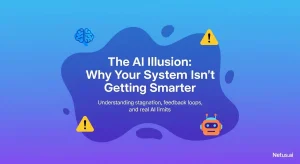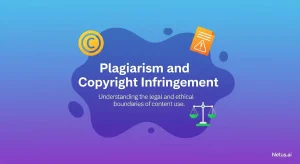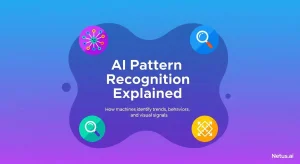Direct Plagiarism: What It Is and Effective Strategies to Prevent It
Ashley Merit
Content writer and editor for Netus.AI
Table of Contents
Direct Plagiarism. In today’s world, easy access to information has led some individuals to engage in the unethical practice of using other people’s work without proper attribution, particularly in academic papers. This deliberate act of taking credit for someone else’s textual work is referred to as direct plagiarism. Plagiarism is a significant issue not limited to the academic sector; it also extends to various online articles. The proliferation of online platforms and resources like e-books and journal archives has made information readily available, contributing to the increasing instances of plagiarism.
While most cases of direct plagiarism are intentional, carelessness—such as forgetting to insert quotation marks—may also result in unintended plagiarism but also forgetting to use a Chat GPT remover. Individuals who use content without proper attribution may assume that their plagiarism will go undetected, but it’s essential to recognize that numerous advanced online tools can detect copied content with relative ease. Plagiarism detection software can quickly identify matching sources, making it easier to catch those who submit papers containing borrowed content.
Key Takeaways
- Direct plagiarism is the unethical act of using another person’s work without proper attribution
- The prevalence of online platforms and resources has contributed to the increase in plagiarism instances
- Advanced online plagiarism detection tools are readily available, making it easier to identify copied content.
The Various Forms of Direct Plagiarism
Direct plagiarism consists of several subtypes involving the copying of an author’s original work without proper attribution. The two major forms of direct plagiarism include mosaic plagiarism and word-for-word plagiarism.
Mosaic Plagiarism:
Mosaic plagiarism is an intentional act where a writer incorporates text from another author, weaving their own words into the copied material to subtly alter its appearance. However, the fundamental meaning remains unchanged. This technique is designed to avoid detection by plagiarism scanners, but advanced detectors can easily identify this type of plagiarism.
Mosaic plagiarism also goes by the names patchwork plagiarism or patchwriting. Both terms reflect the attempt to conceal the copied content by integrating it with the writer’s own words.
Word-for-Word Plagiarism:
This form of direct plagiarism involves copying content without making any modifications. Word-for-word plagiarism can be intentional, but it may also fall under accidental plagiarism. In some cases, students copy reference material for their academic papers without properly attributing the source or using quotation marks, turning the passage into plagiarized content.
Small oversights may result in direct plagiarism, so it is vital to carefully review quoted and paraphrased passages for proper citations and quotation marks, respectively.
Academic institutions and other authorities implement strict consequences for direct plagiarism violations, particularly when it comes to blatant copying. Failing to recognize the different types of plagiarism – mosaic, patchwork, clone, verbatim, and global plagiarism – can lead to academic dishonesty charges, risking one’s reputation and potentially resulting in failure or more severe penalties.
Strategies for Preventing Direct Plagiarism
It’s crucial to take appropriate measures to prevent direct plagiarism as it carries severe consequences and can negatively impact one’s academic and research career. Here are some useful strategies to avoid direct plagiarism:
- Citation: Use proper citations to give credit to the original author when using their ideas or specific text in your work.
- Paraphrasing: Rewrite the information in your own words to demonstrate your understanding, while still providing a citation to the original source.
- Quotation marks: Use quotes for directly borrowed phrases or sentences, and include an in-text citation to attribute the source properly.
- Reference list: Maintain a well-organized reference list containing all the sources used in your work, following the appropriate citation style.
- Attribution: Be transparent in acknowledging the contributions of other authors and provide clear attribution when necessary.
- Confidence in writing: Develop self-assurance in your writing abilities and resist the temptation to copy content from other sources. Remember, an original and modestly written piece is far more valuable than a plagiarized work.
Following these guidelines will help you maintain academic integrity and produce quality work while avoiding the pitfalls of direct plagiarism.
How to Avoid Unintentional Copying of Content
Use Citations While Taking Notes from References
When using information from other sources to support arguments in a research paper, remember to add proper citations alongside the notes. This will ensure correct attributions and avoid missing citations when incorporating the material in academic papers.
Understand Paraphrasing Rules and Guidelines
It’s critical to be aware of the allowed percentage of paraphrased content that can be included in a paper. Academic essays should not be mere compilations of paraphrased passages from different sources. Adhere to the guidelines to avoid mistakes.
Thoroughly Review and Scan the Paper
To prevent unintentional plagiarism, double-check the paper for missing quotation marks or incorrect attributions. After manually reviewing the document, it’s essential to use a high-quality plagiarism checker for added security. Plagiarism detection software can quickly identify instances of direct copying and generate a detailed report showing the percentage of copied words in the document.
A patchwork plagiarism scenario occurs when scattered phrases form a substantial portion of the paper. In this case, extensive rework is necessary. If the scanner detects a low percentage of scattered copied phrases, it doesn’t necessarily indicate direct plagiarism. However, even a single passage that’s identified as an instance of direct plagiarism is enough to render the entire paper as plagiarized.
Academic integrity is crucial, and examiners deal with direct plagiarism violations strictly. To prevent unintentional plagiarism, consistently adhere to the guidelines mentioned above, maintain a commitment to proper referencing throughout the paper, and utilize advanced plagiarism detection tools to verify the content’s originality.
Frequently Asked Questions
What is direct plagiarism in scholarly writing?
Direct plagiarism is when someone deliberately copies another person’s work word-for-word without proper attribution in the context of academic writing. This includes copying phrases, sentences, or entire sections from a source without giving credit to the original author.
How can students avoid committing direct plagiarism?
Some effective ways to avoid direct plagiarism include:
- Properly citing all sources used, both in-text and in the reference list or bibliography
- Paraphrasing or summarizing ideas in your own words, while still providing a proper citation
- Utilizing quotations for direct statements or phrases from a source, and including the source within your citations
- Ensuring a thorough understanding of the topic to enable you to discuss it in your own words
- Utilizing plagiarism detection tools to scan your work and ensure that it is free from plagiarism
What distinguishes direct plagiarism from paraphrasing?
Direct plagiarism involves copying someone’s work word-for-word, while paraphrasing involves expressing the same ideas by rephrasing them in your own words. When paraphrasing, it is essential to provide proper citations to avoid unintentional plagiarism.
What are the potential consequences for students who commit direct plagiarism?
In higher education institutions, there are strict policies against plagiarism. The implications for students who commit direct plagiarism can include:
- Failing the assignment
- Failing the course
- Being reported to the Dean of Students
- Academic probation or expulsion, in severe cases
How is direct plagiarism different from mosaic and self-plagiarism?
While direct plagiarism involves word-for-word copying of someone else’s work, mosaic plagiarism occurs when a person copies text from various sources and combines them within their own work without giving proper credit. On the other hand, self-plagiarism occurs when a person reuses their own previously published or submitted work as if it were new, without proper citation or attribution.
In what ways can technology aid in detecting and preventing direct plagiarism?
There are numerous technological tools available to help detect and prevent plagiarism. These tools employ algorithms to compare a document’s text against a vast database of sources, identifying matches and potential instances of plagiarism. By using plagiarism detection software like Copyleaks, Turnitin, or Grammarly, students can verify that their work is original and free of plagiarism before submitting their assignments.

The shortcomings of content generated by AI | NetusAI
Discover why fast, high-volume AI content often fails to deliver real results. Learn about the crucial missing feedback loop and how implementing performance tracking can transform your AI content strategy.

The illusion of AI: Your system's intelligence gap | NetusAI
Stop wasting marketing spend! Most AI tools don’t learn from results, causing content stagnation and low engagement. Discover why your generative AI isn’t getting smarter and what system actually learns and optimizes content.

Plagiarism and copyright infringement | NetusAI
Learn the distinct differences between plagiarism and copyright infringement. Understand the ethical and legal implications and get practical strategies for avoiding both academic and creative work with NetusAI.

Tips and strategies for mobile content marketing | NetusAI
Optimized for mobile-first indexing, learn 5 essential strategies to capture attention, enhance engagement and drive leads and sales with your mobile content marketing.

Web content editing guidelines for the AI era | NetusAI
Review web content editing guidelines for the AI era. Learn how to edit AI-generated content, ensure authenticity and optimize for SEO and readability.

Explaining AI pattern recognition | NetusAI
AI pattern recognition enables machines to identify trends for diverse applications, from detecting plagiarism to fraud. Discover its processes, models and real-world benefits.
